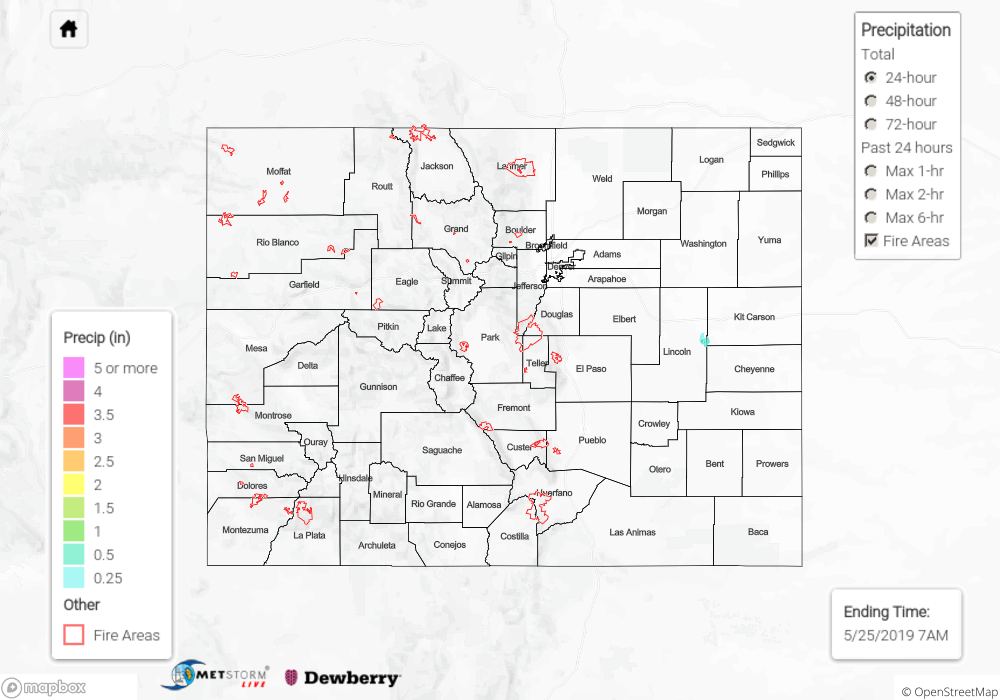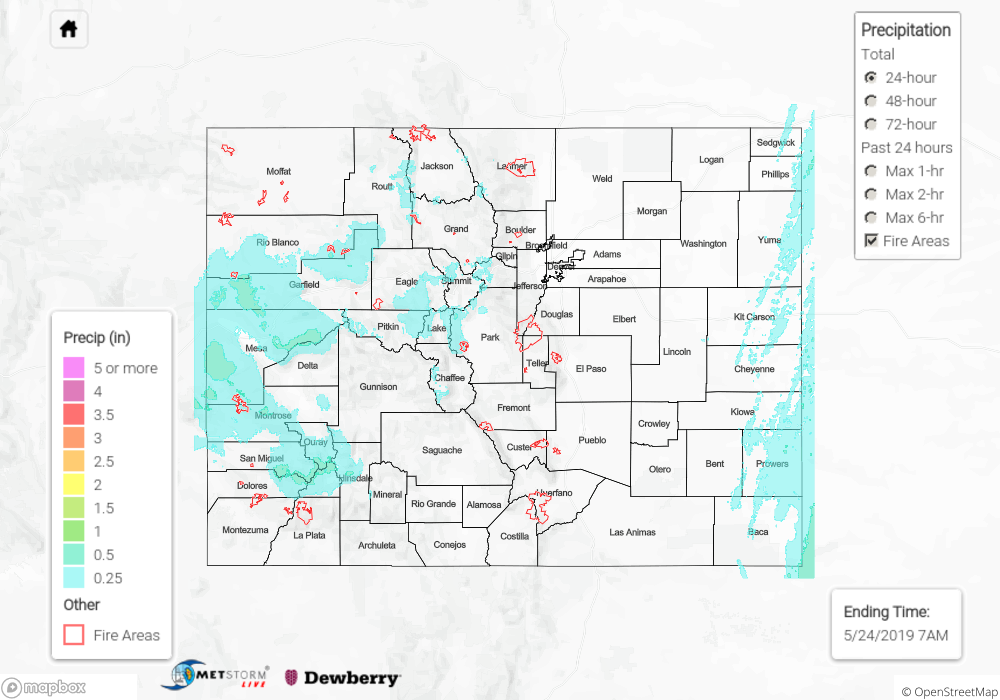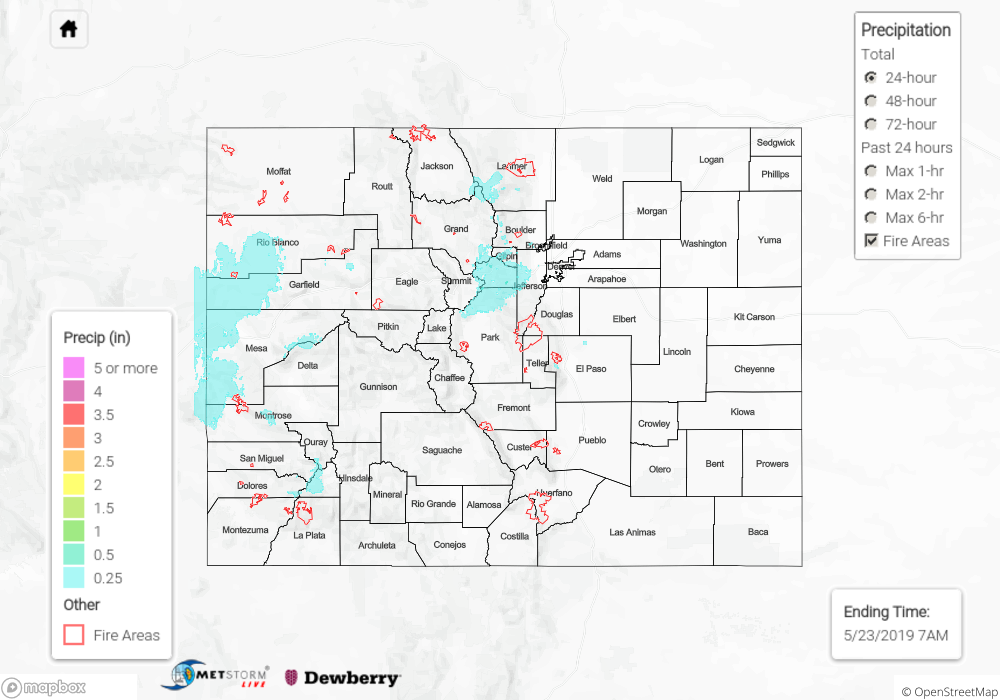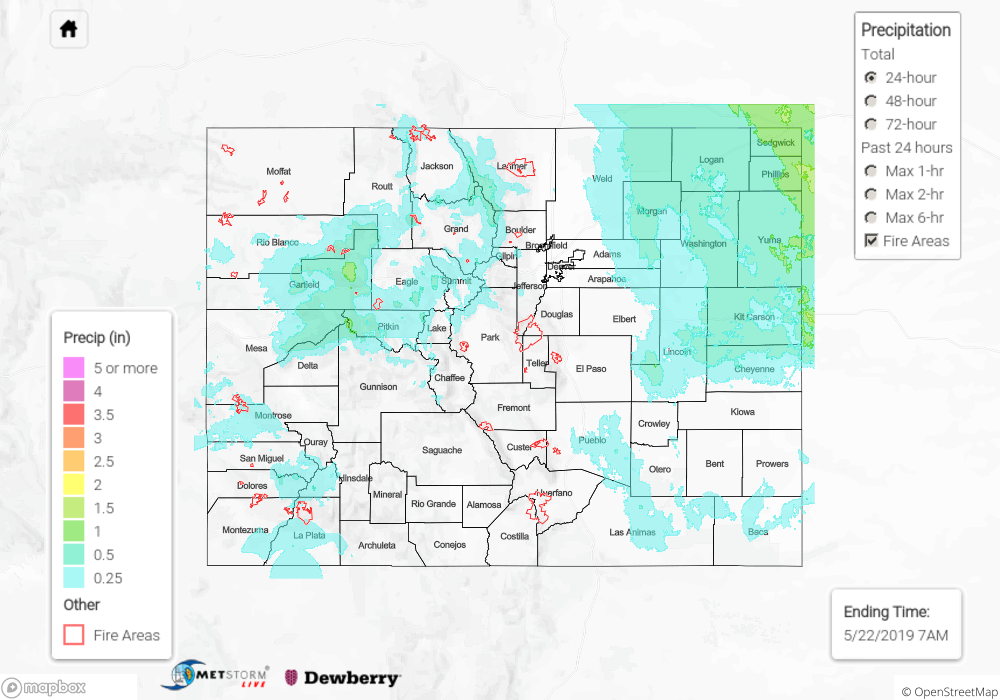Issue Date: Saturday, May 25th, 2019
Issue Time: 9:10 AM MDT
Summary:
After days of cool and cloudy weather, Mother Nature finally relented and allowed Colorado to experience a bit more sunshine and warmer temperatures. Partly sunny skies were in place across much of the High Country and over the Palmer Ridge during the afternoon and evening, with the San Luis Valley and most of the lower elevations of eastern Colorado under sunny skies. Overall, it was a dry day across the state, aside from a few isolated light showers over the higher terrain of the Northwest Slope and Northern Mountains.
No flash flooding was reported yesterday. For a look at precipitation estimates in your area, please see the State Precipitation Map below. NOTE: The small area of precipitation depicted east of Limon is an error – that is the location of a wind farm, and it produced returns in the radar data.
Click Here For Map Overview
The map below shows radar-estimated, rainfall gage-adjusted Quantitative Precipitation Estimates (QPE) across Colorado. The map is updated daily during the operational season (May 1 – Sep 30) by 11AM. The following six layers are currently available: 24-hour, 48-hour and 72-hour total precipitation, as well as maximum 1-hour, 2-hour and 6-hour precipitation over the past 24 hour period (to estimate where flash flooding may have occurred). The 24-hour, 48-hour and 72-hour total precipitation contain bias corrections that are not disaggregated into the hourly estimates, so there will likely be some differences. The accumulation ending time is 7AM of the date shown in the bottom right corner. Also shown optionally are vulnerable fire burn areas (post 2012), which are updated throughout the season to include new, vulnerable burn areas. The home button in the top left corner resets the map to the original zoom.



